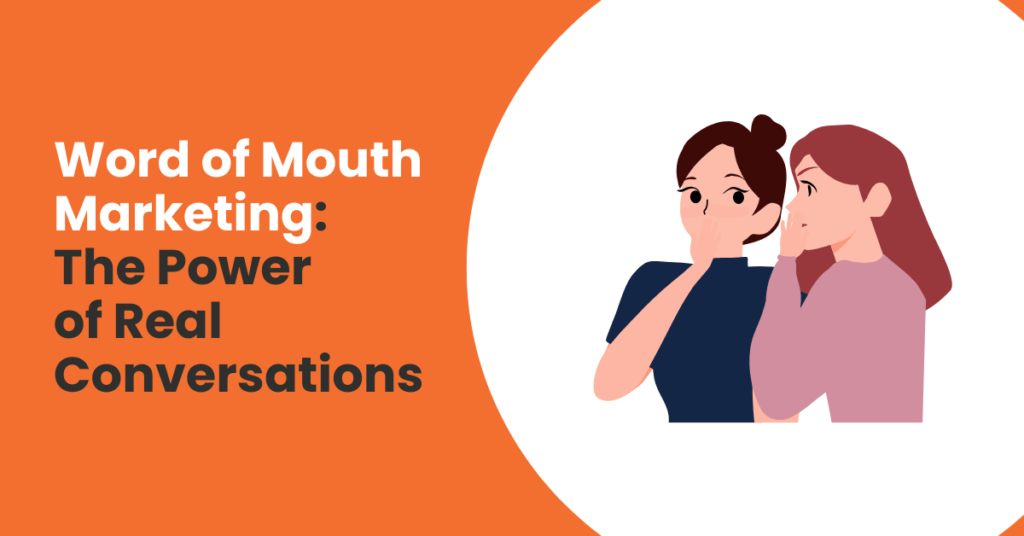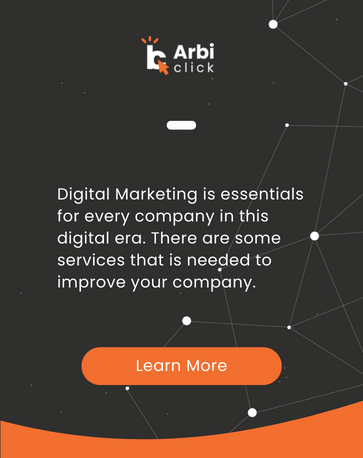Word of Mouth Marketing:
The Power of Real Conversations

In an era completely saturated with digital advertisements and sponsored content flooding every corner of the internet, one form of marketing remains not just relevant, but arguably more powerful than ever: word of mouth marketing.
It’s the original social network, the very first form of marketing that existed long before Facebook, Instagram, or any digital platform. It’s built on something that can’t be manufactured or bought: trust, authenticity, and genuine human connection between real people sharing real experiences.
Even with all the sophisticated technology, artificial intelligence, and data-driven tools we have access to today, nothing influences a buying decision quite like a recommendation from someone we actually trust. The numbers back this up in a big way.
Research consistently shows that over 90% of consumers place more trust in personal recommendations from friends, family, or even strangers online than they do in traditional advertising messages from brands.
That’s a staggering difference, and it tells you everything you need to know about where real influence lives.
So here’s the million-dollar question: how can brands these days tap into and harness the incredible power of word of mouth to grow their business organically? Let’s dig deep and find out exactly how to make it happen.

Word of Mouth in Marketing
Word of mouth (WOM) marketing happens when satisfied customers voluntarily share their positive experiences with others, whether that’s in person during casual conversations, on social media platforms where they have an audience, or through written reviews on websites and apps.
But here’s the critical distinction: it’s not just about getting people talking for the sake of talking. It’s about deliberately creating experiences so remarkable, so memorable, or so valuable that customers genuinely want to talk about them.
There’s a difference between asking people to share and giving them something they can’t help but share. Modern word of mouth marketing can take many different forms in today’s digital landscape:
In-Person Recommendations
A friend enthusiastically recommending a café to you after they had a genuinely great visit—the coffee was exceptional, the service was warm, the atmosphere was perfect. That personal endorsement carries weight.
Social Media Sharing
Someone posting an unboxing video on TikTok or Instagram because they’re genuinely excited about their purchase and want to share that excitement with their followers. This isn’t sponsored content; it’s organic enthusiasm.
Social Media is extremely important. If you are able to manage them well, it actually can boost your company.
Online Reviews
A loyal customer taking time out of their day to leave a thoughtful, glowing review on Google, Yelp, or your website because their experience exceeded expectations and they want others to know.
Authentic Influencer Mentions
Influencers or content creators casually mentioning a product they genuinely love and use regularly in their content—not because they’re contractually obligated to, but because it’s authentically part of their life.
Natural Conversations
People bringing up your brand organically in relevant online discussions, forum threads, Reddit posts, or group chats when someone asks for recommendations.
In short, word of mouth transforms your customers into your most powerful marketing force, and the best part is, it happens for free. You’re not paying for ad space or media placement. You’re earning advocacy through excellence.
Also read: How to Convert Clicks to Customers? Guide to Optimizing Landing Pages

Why Word of Mouth Marketing Works Very Effective for Businesses
Understanding why word of mouth is so effective helps you approach it strategically. Here’s what makes it such a powerful marketing channel.
Trust Is Everything
At the end of the day, people believe real people far more than they believe brands or advertisements. When your friend tells you about an amazing restaurant they discovered, you’re probably going to try it. When you see an ad for that same restaurant, you’ll scroll right past it.
Recommendations from friends, family members, colleagues, or even authentic online creators and reviewers carry exponentially more credibility than any paid advertising ever could.
There’s no ulterior motive detected, no sales pitch to be skeptical of—just one person genuinely helping another person make a good decision.
It’s Cost-Effective
Here’s something every business owner and marketer appreciates: while paid advertising campaigns need constant budget infusions to keep running (you stop paying, they stop working) word of mouth spreads organically once you deliver an excellent product or experience.
There might be some initial investment in creating that remarkable experience. But once the word of mouth engine starts running, it continues generating results without ongoing ad spend. The ROI on earned word of mouth is essentially infinite because the ongoing cost is zero.
But you can use advertisement to create a word of mouth based on the ads. It doesn’t always have to be products or services. Here’s an article for you on how to use Facebook Ads without wasting budget.
It Builds Loyal Communities
When people feel emotionally connected to your brand on a personal level, when they feel like you share their values, understand their needs, or have genuinely improved their lives—they naturally want to share that discovery with others who might benefit too.
This creates a self-sustaining network of brand advocates who aren’t just customers; they’re community members who feel personally invested in your success. They recommend you because your success validates their choice and helps people they care about.
It Has Long-Term Impact
Unlike a paid ad campaign that stops generating impressions the moment you turn off the budget, great experiences are remembered and retold over time.
Someone might recommend your brand to a friend six months after their positive experience. That friend might recommend it to someone else a year later.
Word of mouth has a compounding effect that continues giving your brand visibility, credibility, and new customer acquisition without requiring any additional investment. It’s the gift that keeps on giving.
Also read: 4 Impactful Tips to Kickstart your Digital Marketing Career

Types of Word of Mouth Marketing
Not all word of mouth happens the same way. Understanding the different types helps you approach each strategically.
1. Organic Word of Mouth
This is the holy grail completely natural, unprompted sharing that happens when customers are so impressed or satisfied that they voluntarily tell others about their experiences.
This happens naturally when someone discovers a new skincare product that actually delivers on its promises and genuinely solves their problem.
They’re so thrilled with the results that they can’t help but tell their friends, post about it on social media, or mention it when someone asks for recommendations. You didn’t ask them to; you didn’t incentivize them. They did it because the experience warranted it.
2. Amplified Word of Mouth
While organic word of mouth is ideal, brands don’t have to just sit back and hope it happens. You can strategically encourage and amplify word of mouth through thoughtful campaigns, smart incentives, or social sharing activities.
This includes things like referral programs where existing customers get rewards for bringing in new customers, branded hashtag campaigns that encourage user-generated content, contests that require social sharing to enter, or simply making it incredibly easy for satisfied customers to leave reviews or share their experiences.
The key difference is you’re actively facilitating and encouraging the sharing rather than just hoping it occurs naturally. Both types are valuable, and the best strategy incorporates elements of both.
Also read: Content Marketing for SEO-Practical Guide for Startups and Ecommerces

How to Build a Strong Word of Mouth Marketing Strategy
Knowing what word of mouth is and why it works is valuable, but the real question is: how do you actually make it happen consistently? Here’s your roadmap.
1. Deliver an Amazing Experience
This is the absolute foundation that everything else is built on. You cannot hack your way to sustainable word of mouth without this piece in place. Good marketing might get people in the door once, but great experiences are what make them talk.
If what you offer, whether it’s a product, service, or experience, truly helps people solve a problem, genuinely delights them in unexpected ways, or surprises them with quality that exceeds their expectations, they’ll talk about it naturally. They’ll want their friends to experience what they experienced.
Think about the last time you enthusiastically recommended something to someone. It wasn’t because the company had a clever marketing campaign. It was because your personal experience with that thing was so positive that sharing it felt like doing your friend a favor.
2. Encourage Reviews and Testimonials
Happy customers are often willing to share their positive experiences—they just need a gentle nudge and an easy path to do so. Don’t be shy about asking satisfied customers to share their thoughts publicly.
This could mean requesting Google reviews, asking them to post about their experience on Instagram or Facebook, encouraging them to leave feedback on your website, or simply writing a testimonial you can feature in your marketing materials.
Make the process as frictionless as possible. Send a direct link to your review page. Provide simple prompts or questions to help them structure their thoughts. Follow up at the moment when their satisfaction is highest—right after a successful outcome or positive interaction.
3. Create Shareable Moments
This is where you move beyond just having a good product and start thinking about the entire customer journey. What moments in the experience are naturally shareable? What elements might prompt someone to take a photo, tell a story, or share with friends?
Think beyond just your core product or service. Beautiful, Instagram-worthy packaging that people want to photograph and share. A handwritten thank-you note that makes customers feel genuinely appreciated.
An exclusive event or experience that attendees will talk about for weeks. A surprising free gift included with purchases that delights customers.
Every touchpoint is an opportunity to create a story worth telling. What can you do at each stage of the customer journey to make it memorable and share-worthy?
4. Leverage User-Generated Content (UGC)
According to Wikipedia, UGC is content generated by users of the Internet such as images, videos, audio, text, testimonials, software, and user interactions. Your customers are already creating content—photos of your products, videos of them using your services, posts about their experiences. Encourage this behavior actively and make it part of your strategy.
Create a branded hashtag that customers can use when posting about you. Run campaigns that specifically ask customers to share their photos, videos, or stories. Offer incentives for the best submissions. Feature customer content prominently on your own social channels and website.
When you repost and celebrate user-generated content, it accomplishes multiple things: it builds authenticity by showing real customers and real usage, it makes the featured customers feel valued and recognized (strengthening their connection to your brand), and it encourages others to create and share their own content hoping to be featured too.
Also read: The Impact of Effective CTA-Converting Visitor to Customer

5. Build Referral Programs
Sometimes people need a little extra motivation to actively refer others, even when they love your brand. A well-designed referral program provides that motivation while making the sharing process easy.
Reward customers who bring in new customers with something valuable: a discount on their next purchase, a free gift or upgrade, loyalty points they can redeem, or exclusive access to new products.
Make sure the reward is compelling enough to motivate action but not so generous that it attracts people who aren’t genuinely satisfied.
The key is making the referral process effortless. Provide a unique referral link they can easily share. Create pre-written messages they can customize. Track referrals automatically so they don’t have to prove they referred someone. Remove every possible friction point.
6. Partner With Micro-Influencers
Traditional influencer marketing can sometimes feel inauthentic, everyone knows it’s a paid partnership. But micro-influencers who genuinely use and love your products often serve as the perfect bridge between paid marketing and authentic word of mouth.
These are people with smaller but highly engaged audiences (typically 1,000 to 100,000 followers) who have built trust with their community. When they recommend products, their audience actually listens because they’ve established credibility over time.
The key is finding influencers who authentically align with your brand and would genuinely use your products even without compensation. Their recommendation feels more like word of mouth from a trusted friend than traditional advertising, even when it’s a formal partnership.
7. Engage Actively Online
Word of mouth doesn’t just happen in one direction—customers talking about you. It’s amplified when you actively participate in the conversation and build genuine relationships with your community.
Reply thoughtfully to comments on your social posts. Repost and celebrate user-generated content featuring your brand. Thank customers publicly when they leave positive reviews. Answer questions helpfully in your DMs or comments. Show up in relevant online communities where your customers gather.
The more actively you engage and show appreciation for your community, the more connected people feel to your brand. And people who feel connected become people who advocate. They’re not just customers anymore; they’re part of something bigger.
Also read: Unleashing the Power of Click Marketing As PPC, CPC, and CTR

Trending Word of Mouth Marketing: What’s Changing
The fundamental principles of word of mouth remain constant trust, authenticity, genuine connection but how it manifests keeps evolving. Here’s what’s shaping word of mouth marketing right now.
Online Reviews Are the New “Recommendations”
Word of mouth has largely moved online. The digital equivalent of asking your friend for a recommendation is now searching for reviews on Google, scrolling through comments on TikTok videos, or checking Instagram for real customer experiences.
Platforms like Google Reviews, TikTok, Instagram, YouTube, and even Reddit have become the primary channels where modern word of mouth happens and spreads. Having a strong presence and positive reputation on these platforms isn’t optional anymore, it’s essential for capturing this digital word of mouth.
Authenticity Is Non-Negotiable
Today’s audiences are incredibly sophisticated at detecting what’s genuine versus what’s manufactured or staged for marketing purposes. They’ve seen so much polished, perfect, obviously sponsored content that they’ve developed sensitive BS detectors.
Real stories from real people (even if they’re not perfectly produced or edited) create dramatically stronger impact than professional-looking content that feels inauthentic. Raw, unfiltered customer testimonials often outperform slick video testimonials that look too much like advertisements. People want proof, not perfection.
Micro-Communities Matter
While broad social media reach is nice, smaller, more trusted online communities often wield disproportionate influence when it comes to word of mouth recommendations.
Think about niche Discord servers where enthusiasts gather, specialized Facebook groups focused on specific interests or needs, subreddit communities built around particular topics, or private Slack channels where professionals exchange insights.
Recommendations that happen within these tight-knit communities carry enormous weight because members have established trust with each other over time.
Experience > Advertising
This year, the line between customer experience and marketing has completely blurred. Your customer experience is your marketing strategy. Every single touchpoint, from your website’s user interface to your customer service interactions to your product packaging to your return policy, shapes what people say about you when they talk to others.
Brands that understand this invest as much in perfecting the customer journey as they do in advertising campaigns. They know that one exceptional customer experience shared on social media can generate more valuable word of mouth than thousands of dollars in paid ads.

Let Your Customers Be Your Voice
At its absolute core, word of mouth marketing is about people sharing what they genuinely love with other people they care about. It’s built on authenticity, emotional connection, and trust—things that no amount of paid advertising budget can fully replicate or replace.
Psychologically, sometimes human will talk about things unconsciously. The absolute best way to get people talking about your brand is beautifully simple: give them something genuinely worth talking about.
Whether it’s exceptional service that goes above and beyond their expectations, unique value that solves their problems better than any alternative, a personal touch that makes them feel seen and appreciated, or an experience so memorable they can’t help but share it—every positive experience plants a seed that grows into a story that spreads.
When your customers become your storytellers, when they’re out there voluntarily advocating for your brand without you asking them to your marketing never stops working. It runs 24/7, reaches new audiences constantly, costs you nothing beyond the investment in excellence, and carries more credibility than any advertisement you could ever create.
That’s the enduring power of word of mouth. That’s why it’s been the most effective form of marketing for thousands of years and will continue to be for thousands more.
Also read: The Secret to Turning Organic Traffic into Quality Leads

